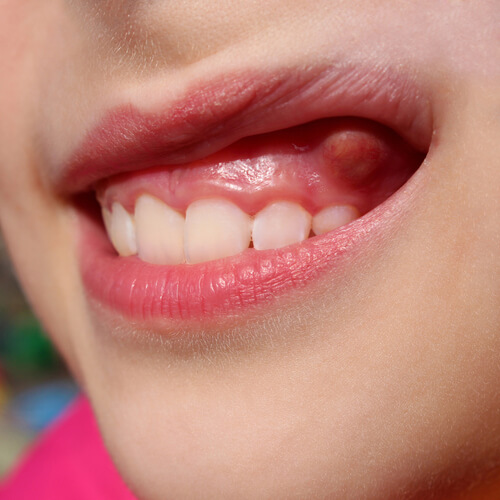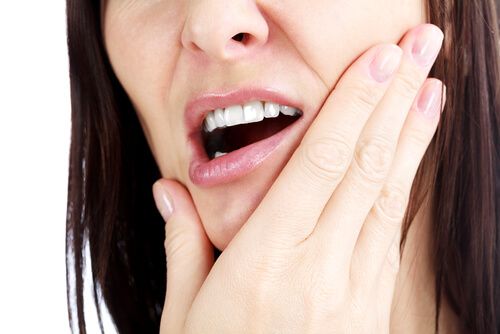Facing a swollen face due to an abscessed tooth is uncomfortable and can signal a serious dental issue. In this article, we delve into the causes behind the swelling, practical steps to reduce swelling in the face from an abscessed tooth, and the importance of professional dental intervention. Discover effective strategies to reduce swelling and understand the potential risks of leaving an abscess untreated.
Join us as we provide a detailed guide on managing this common yet critical dental emergency.
Understanding Tooth Abscesses: Causes of Facial Swelling
Understanding tooth abscesses is crucial for managing and preventing the facial swelling they often cause. An abscess in the tooth develops primarily due to a bacterial infection within the dental pulp, leading to pain, swelling, and complications if untreated.
Bacterial Infection
The most common cause of a tooth abscess is a severe bacterial invasion that reaches the dental pulp, usually due to untreated cavities or deep tooth decay.
Gum Disease
Infections resulting from periodontal disease can also lead to a periodontal abscess, particularly when gum pockets deepen and harbor bacteria next to the tooth’s root.
Dental Trauma
A crack, fracture, or trauma to the tooth can expose the pulp to bacteria, rapidly escalating into an abscess if tooth infection is not promptly addressed.
Previous Dental Work
Occasionally, dental procedures can inadvertently introduce bacteria deep into the tooth, which may eventually result in an abscess if not properly sealed or treated.
Tooth Abscesses Symptoms
Tooth abscesses are painful, pus-filled infections usually resulting from severe tooth decay or injury.
Severe, Persistent Pain: The primary symptom of a tooth abscess is intense, throbbing pain that can radiate to the jawbone, neck, or ear. This pain may worsen when lying down due to increased pressure in the head and is not alleviated by over-the-counter pain relievers.
Sensitivity to Temperature and Pressure: Individuals with tooth abscesses often experience heightened sensitivity to hot and cold foods or beverages, which can trigger sharp, piercing pain. Additionally, there may be discomfort when chewing or biting, as the pressure can aggravate the inflamed area.
Facial Swelling: The face area adjacent to the infected bone or tooth may swell noticeably. Depending on the severity and location of the infection, this swelling can sometimes extend into the neck and upper body.
Fever and General Discomfort: A fever often accompanies a tooth abscess, signaling that the body is fighting an infection. Other systemic symptoms might include a general feeling of malaise or fatigue.
Swollen Lymph Nodes: The lymph nodes located under the jaw or neck might swell and become tender as the body’s immune system reacts naturally, attempting to contain the infection from the abscess.
Bad Breath and Unpleasant Taste: An abscess may produce a foul taste in the mouth and persistent bad breath due to the bacteria in the infected area.
Immediate Remedies to Reduce Facial Swelling at Home

When dealing with swelling from an abscessed tooth, immediate home remedies can provide temporary relief before professional dental treatment.
Cold Compress
Applying a cold compress to the outside of the cheek near the swollen area can help reduce swelling and numb discomfort. Apply ice wrapped in a cloth for 15-minute intervals.
Elevation
Keeping the head elevated, especially while sleeping, can prevent blood from pooling in the head, reducing inflammation and swelling around the affected area.
Saltwater Rinse
Rinse the mouth with a saltwater solution multiple times a day. Mix one teaspoon of table salt with a cup of warm water, swish around your mouth for 30 seconds, and then spit it out. This salt water rinse helps reduce bacteria and soothe swollen tissues.
Hydration and Avoidance of Irritants
Staying well-hydrated helps the body fight infection and heal faster. Avoid alcohol, tobacco, and very hot or spicy foods, which can exacerbate swelling.
Anti-Inflammatory Medications
You can use over-the-counter non-steroidal anti-inflammatory drugs (NSAIDs), like ibuprofen, to reduce pain and swelling. Still, they should be taken according to the package directions to avoid adverse effects.
Herbal Teas
Herbal teas like chamomile and peppermint have anti-inflammatory properties. Drinking these can gently relieve swelling and pain while keeping you hydrated.
When to See a Dentist: Recognizing Emergency Signs
Recognizing when to seek professional dental care is crucial, especially when symptoms of an abscessed tooth escalate into potential emergencies.
Persistent Pain: If pain persists despite home remedies and becomes unbearable, it is critical to see a dentist immediately to prevent further complications.
Swelling that Spreads: When swelling extends beyond the jaw to other parts of the face or neck, it may indicate a spreading infection, necessitating urgent dental or medical attention.
Fever and Chills: A fever accompanied by chills is often a sign of infection spreading beyond the local site, requiring immediate professional intervention.
Difficulty Breathing or Swallowing: These symptoms can be very serious, suggesting that the swelling affects essential functions and may be life-threatening.
Prolonged Tooth Sensitivity: Increased sensitivity to hot or cold, which lasts after the stimulus is removed, indicates the need for a dental evaluation to assess potential nerve damage or deeper infection.
Foul Taste or Smell: An unpleasant taste or odor from the infected area, especially combined with pus or drainage, is a clear sign that the abscess may have ruptured, and professional cleaning and treatment are necessary.
Medical Treatments for Abscessed Tooth Swelling
When an infected tooth causes significant swelling, medical intervention becomes necessary to manage the infection and alleviate symptoms.
Antibiotics: Often the first line of treatment, antibiotics are prescribed when the infection shows signs of spreading or if the patient is immunocompromised. They help reduce the bacterial load and control infection.
Incision and Drainage: For accessible abscesses, a dentist might perform an incision and drainage procedure. This quickly relieves pressure and pain by allowing pus to escape.
Root Canal Treatment: When an abscess results from a deep cavity that reaches the tooth’s pulp, root canal therapy may be performed. This procedure removes the infected tissue and can prevent the need for tooth extraction.
Extraction: If the tooth cannot be saved like in severe cases, extraction may be required. Removing the source of infection can lead to rapid improvement in symptoms.
Follow-up Care: After initial treatment, follow-up appointments are crucial to ensure the infection is eradicated and assess for further treatment needs, such as dental restoration.
Preventive Strategies to Avoid Future Dental Abscesses

Preventing dental abscesses involves a proactive approach to oral hygiene and regular dental care to stop problems before they escalate into serious infections.
Regular Dental Checkups: Schedule visits to the dentist at least twice a year for professional cleanings and exams. These checkups can catch early signs of decay or gum disease before they lead to abscesses.
Proper Oral Hygiene: Brush twice daily with fluoride toothpaste, floss daily, and use an antiseptic mouthwash to reduce plaque and bacteria buildup.
Dietary Choices: Reduce consumption of sugary and acidic foods and drinks to prevent enamel erosion and tooth decay. Instead, choose foods that promote salivation and natural tooth cleaning, like fresh fruits and vegetables.
Immediate Treatment of Dental Issues: Address cavities, gum disease, or broken teeth promptly to prevent the development of an infection that could result in an abscess.
Avoid Harmful Habits: Smoking and using tobacco products can contribute to gum disease and other conditions that increase the risk of abscesses. Quitting these habits can significantly improve oral health.
Reducing facial swelling caused by an abscessed tooth requires timely and effective treatment. It is crucial to follow prescribed medical advice and employ at-home care strategies to manage the symptoms. Consulting with a dentist as soon as possible if you notice signs of an abscess can prevent further complications and help maintain your oral health. Remember, early intervention is key to managing dental abscesses effectively.
References
10 Home Remedies for a Tooth Abscess
https://www.healthline.com/health/home-remedies-for-abscess-tooth
How to reduce swelling in the face
https://www.medicalnewstoday.com/articles/how-to-reduce-swelling-in-face
Abscessed Tooth: Symptoms, Causes, Treatment, and More
https://www.verywellhealth.com/pain-relief-for-an-abscessed-tooth-remedies-1059316
Dental abscess
https://www.nhs.uk/conditions/dental-abscess/
Tooth abscess – Symptoms & causes
https://www.mayoclinic.org/diseases-conditions/tooth-abscess/symptoms-causes/syc-20350901




